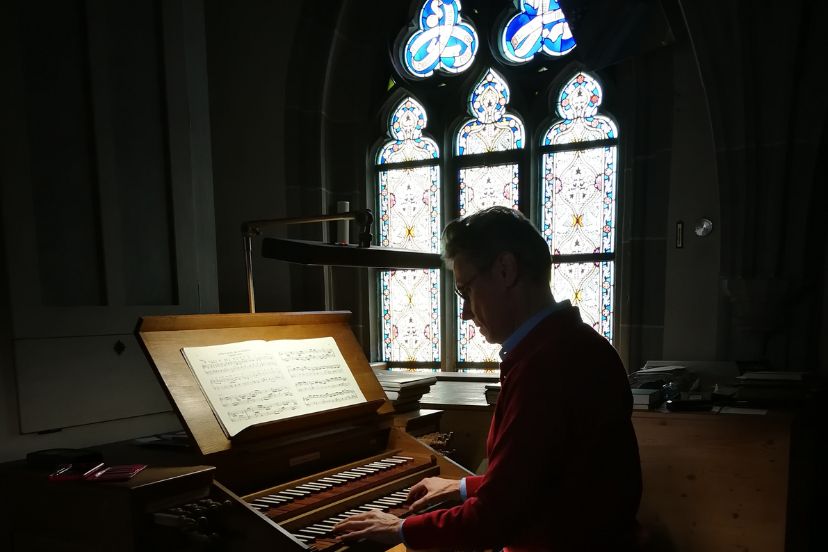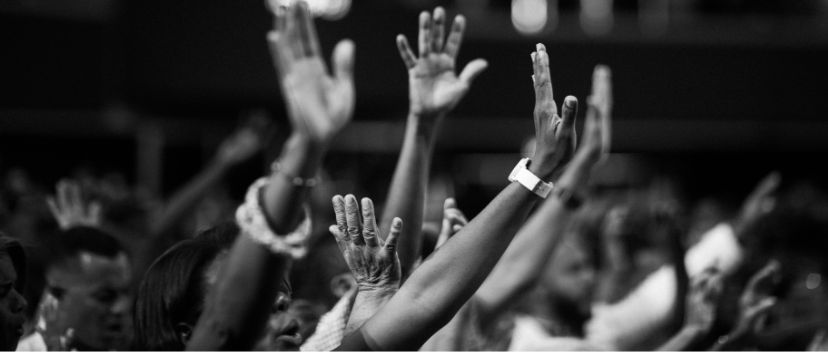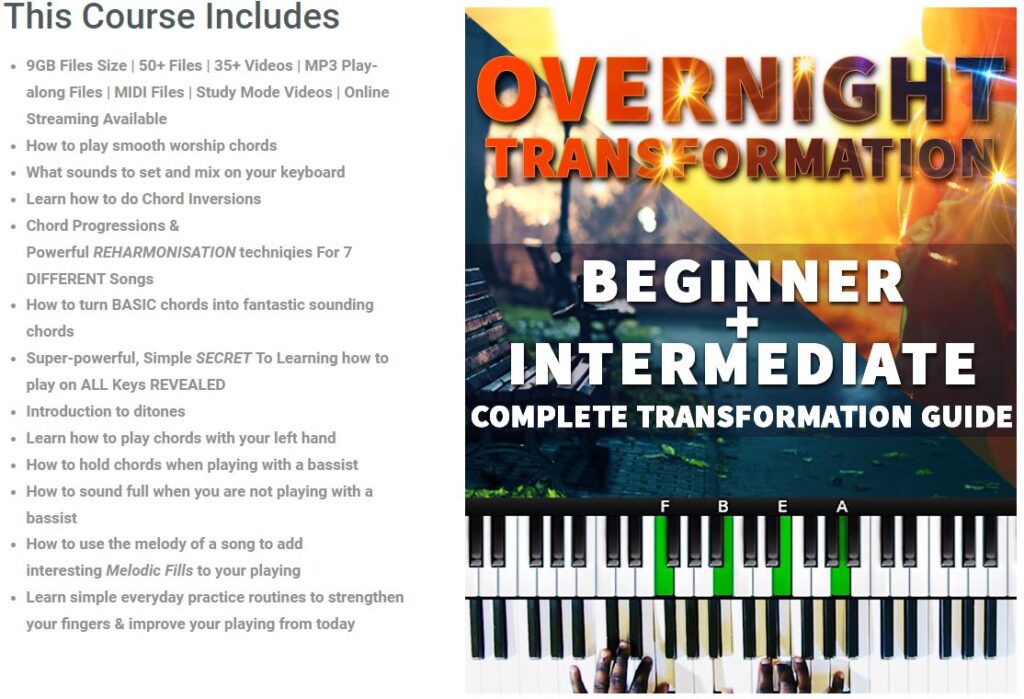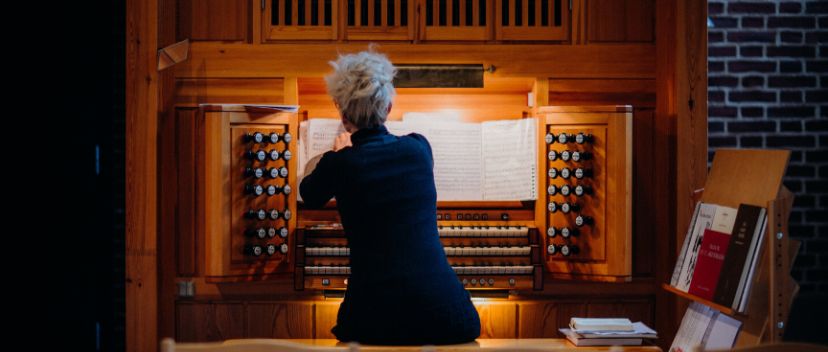For those looking to learn piano in a creative and enjoyable way, Creative Piano Academy offers…
Gospel Piano: Music From Above

The soul-stirring sounds of gospel music are deeply rooted in African-American church traditions, and the gospel piano is a key instrument in this genre. Whether you’re an experienced pianist or just starting out, learning to play gospel piano can be rewarding and fun.
The Basics of Gospel Piano
Gospel piano playing is unique because it’s not just about hitting the notes – it’s about creating a feeling, a mood, and a connection with the audience. You’re not just playing chords; you’re telling a story, sharing a message, and invoking a spirit of hope and love.
The first step to playing gospel piano is understanding the basic chord progression. Most gospel songs follow a simple I-IV-V chord progression, which means if you’re in the key of C major, your chords would be C (the I), F (the IV), and G (the V). This progression creates a unique sound that is characteristic of gospel music.
Major chords, minor chords, and seventh chords are all common in gospel music. Major chords create a bright, happy sound, while minor chords create a more somber, introspective sound. Seventh chords, which are basically a major or minor chord with an extra note added, create a bluesy, soulful sound that is common in gospel music.
While sheet music can be helpful, many gospel musicians learn by ear, listening carefully to recordings of gospel songs and trying to replicate the sounds they hear. This method of learning can be challenging at first, but it can also be incredibly rewarding, as it forces you to listen closely to the music and understand how it’s put together.
Advanced Techniques for Gospel Piano
Once you have a basic understanding of chord progressions and can play some simple gospel songs, it’s time to start exploring more advanced techniques that go beyond just the basics of learning to play piano.
One such technique is the use of passing chords, which are chords that are used to connect two other chords in a progression. Passing chords can add interest and complexity to your piano playing, and they’re a staple of the gospel sound.
Another advanced technique to incorporate into your gospel piano playing is the use of chord voicings. Chord voicings refer to the arrangement of notes within a chord, and different voicings can create different sounds and moods. Experimenting with different chord voicings can help you develop your own unique sound as a gospel pianist.
Bass notes played with the left hand can also add depth and richness to your gospel playing. A common technique is to play the root note of the chord in the bass, but you can also experiment with playing other notes in the bass to create different sounds.
The Influence of Gospel Greats
When learning to play gospel piano, it can be helpful to listen to and study the work of gospel greats like Kirk Franklin, Fred Hammond, and Donnie McClurkin. These musicians have each brought their unique styles and sounds to the genre, and they can provide a wealth of inspiration for aspiring gospel pianists.
Kirk Franklin, for example, is known for his energetic and upbeat style of gospel music, which often features complex chord progressions and rapid-fire piano riffs. Studying his music can provide a masterclass in gospel playing.
Fred Hammond, on the other hand, is known for his soulful, heartfelt style of gospel music. His songs often feature rich, complex chord voicings and a deep, resonant bass note that adds depth and emotion to the music.
Donnie McClurkin is another gospel great whose music is worth studying. His songs are often slower and more contemplative, with a focus on beautiful melodies and powerful lyrics.

The Best Way to Learn to Play Gospel Piano
The Overnight Transformation is a highly comprehensive and effective piano course specifically designed for Gospel musicians at beginning and intermediate levels. This course has garnered a reputation for its quality and easy-to-understand piano lessons.
One of the key strengths of the Overnight Transformation course lies in its extensive content. The course includes instant access to over 35 videos, MP3 play-along files, MIDI files, and study mode videos, providing learners with a wealth of resources to enhance their learning experience.
The course covers crucial areas such as chord inversions, chord progressions, reharmonization techniques, and even how to set and mix sounds on your keyboard.
What sets Overnight Transformation apart is its focus on not just teaching, but also transforming the learner’s mindset towards playing the piano. Each lesson guides learners on how to optimize their existing knowledge and skills, and how to rapidly improve them. This focus on mindset, combined with practical skills, enables learners to master Gospel Piano more effectively.
Overnight Transformation also provides unique insights into playing Gospel music, such as using the melody of a song to add interesting melodic fills to your playing. This approach enhances the musicality and creativity of the learner, making them not just pianists, but true musicians.
Extremely High Student Success Rate
Testimonials on the website show high levels of satisfaction among users, underlining the effectiveness of the course. The website also guarantees customer satisfaction, promising to rectify any issues to ensure that every learner gains maximum value from their purchase.
In conclusion, the Overnight Transformation course offers a well-rounded, comprehensive, and effective approach to learning Gospel Piano. Its focus on both mindset and skill development, its extensive resources, and its unique insights into playing Gospel music make it a standout choice for any aspiring Gospel musician.

FAQs About Gospel Piano
What is gospel piano?
Gospel piano is a style of piano playing that is closely associated with gospel music. It involves playing chords and melodies that support the lyrics of Christian songs, typically in a rhythmic and dynamic manner, and is frequently accompanying a vocalist or choir.
What are chord progressions?
Chord progressions are a sequence of chords that are played in a specific order to create harmony in music. In gospel piano, chord progressions are used to provide the foundation for the melody and lyrics of a song.
What are gospel chords?
Gospel chords are chords that are commonly used in gospel music. They often feature a mixture of major and minor chords, and tend to have a soulful and emotional quality.
What is sheet music?
Sheet music is a musical manuscript that shows the written notes, rhythms, and chords of a piece of music. In gospel piano, sheet music is often used to teach and learn the chords and melodies of a song.
How can I learn to play gospel piano?
Even if you’ve never played piano before, there are several ways to learn gospel piano, including taking lessons from a teacher, using online resources, practicing with sheet music or chord charts, and playing along with recordings of gospel songs.
The best method we’ve found is the Overnight Transformation course reviewed above.
What are passing chords?
Passing chords are chords that are used to create a smooth transition between two other chords in a chord progression. In gospel piano, passing chords can be used to add interest and variation to a song.
What is a key center?
A key center is the tonic note or major chord that a piece of music is based on. In gospel, understanding the key center is essential for playing the correct chords and melody.
What is the left hand used for in gospel piano?
The left hand in gospel is typically used to play chords and provide harmonic support for the melody. This can include playing chord progressions, walk-ups, and walk-downs.
What is the right hand used for in gospel piano?
The right hand in gospel is typically used to play the melody and to add embellishments and improvisation. This can include playing scales, arpeggios, and jazz-style licks.
What are some tips for playing gospel piano?
Some tips for playing gospel include practicing regularly, learning music theory and ear training, experimenting with different styles and chord progressions, and focusing on the message and meaning of the song’s lyrics. With these skills and attitudes, you can discover amazing ways to cover the most inspiring gospel songs and glorify Jesus and the Lord through piano music-playing.

Gospel Piano Summary
Learning to play gospel piano is a journey, not a destination. Whether you’re playing in church, at home, or on stage, there’s nothing quite like the feeling of playing a gospel song that touches people’s hearts and lifts their spirits.
So what are you waiting for? With patience, practice, and a little bit of divine inspiration, you’ll be playing gospel like a pro in no time.



